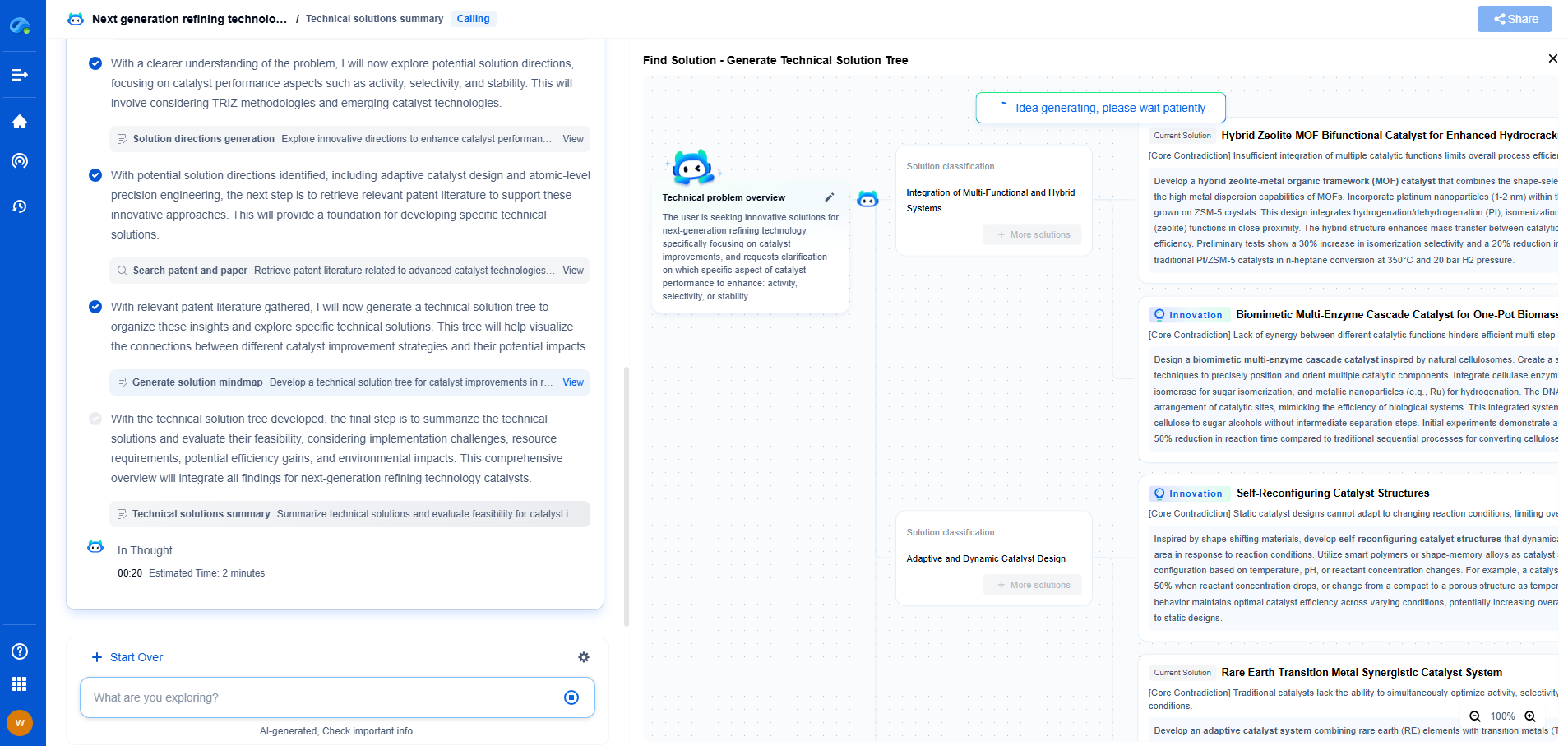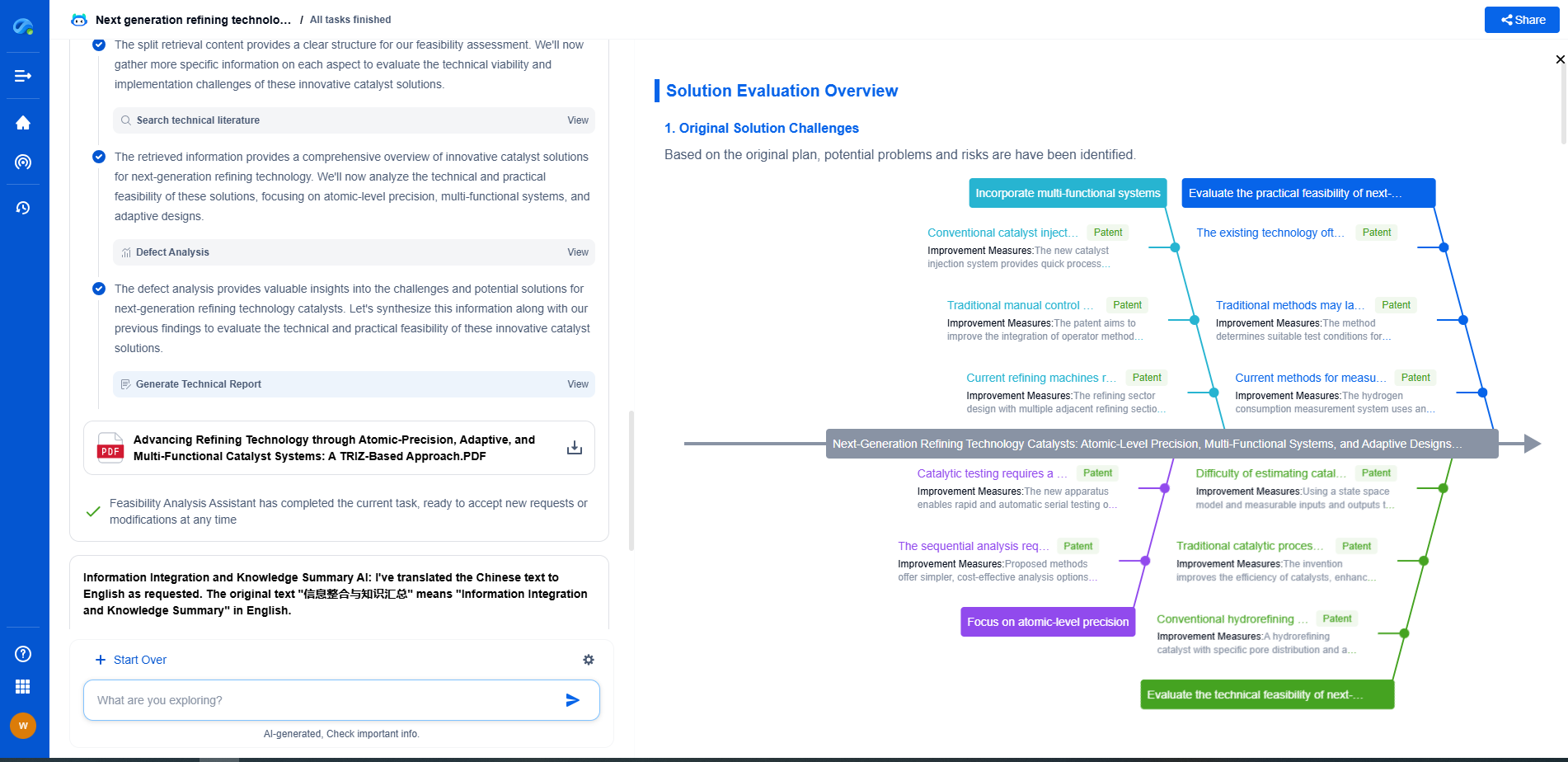Laser Vibrometers vs. Contact Sensors for Ultrasonic Transducer Testing
JUL 16, 2025 |
In the world of ultrasonic transducer testing, precision and reliability are paramount. Engineers and technicians have a choice between two primary measurement tools: laser vibrometers and contact sensors. Both have their own sets of advantages and drawbacks, making the decision a critical one for achieving optimal results. This blog explores the characteristics of laser vibrometers and contact sensors, comparing their effectiveness and suitability for ultrasonic transducer testing.
Understanding Ultrasonic Transducer Testing
Ultrasonic transducers are devices that convert electrical energy into mechanical vibrations and vice versa. They are widely used in various applications such as medical imaging, non-destructive testing, and industrial processing. Testing these transducers accurately is crucial to ensure their performance, longevity, and safety. The choice of measurement tools directly influences the precision and reliability of the testing process.
Laser Vibrometers: Precision Without Contact
One of the most significant advantages of laser vibrometers is their non-contact nature. This eliminates any potential interference or alteration of the transducer's performance during testing. Here are some key benefits of using laser vibrometers:
1. High Precision: Laser vibrometers offer exceptional accuracy, capable of detecting minute vibrations at various frequencies, which is critical for comprehensive ultrasonic transducer testing.
2. Wide Frequency Range: They can measure a broad range of frequencies, accommodating diverse testing requirements without the need for multiple sensors.
3. Minimal Setup: Laser vibrometers require minimal physical setup, reducing the time and complexity involved in testing.
4. Versatility: They can be used on a variety of surfaces and materials, making them suitable for diverse transducer models.
Despite these advantages, laser vibrometers can be costly, and their performance may be affected by environmental factors such as surface reflectivity and ambient light.
Contact Sensors: Direct and Cost-Effective
Contact sensors, such as accelerometers and strain gauges, offer a more traditional approach to ultrasonic transducer testing. Their primary advantage lies in their direct contact with the transducer, which provides certain benefits:
1. Cost-Effectiveness: Generally, contact sensors are more affordable than laser vibrometers, making them accessible for small-scale operations or when budget constraints are a concern.
2. Robustness: They are less affected by environmental conditions, ensuring consistent performance irrespective of external factors.
3. Simplicity: The straightforward design and operation of contact sensors make them easier to use and maintain, requiring less specialized training.
However, the physical attachment of contact sensors can potentially alter the transducer's behavior, leading to measurement inaccuracies. Additionally, they may not be suitable for testing fragile or sensitive materials.
Comparative Analysis: Which to Choose?
The decision between laser vibrometers and contact sensors hinges on specific testing needs and circumstances. If precision, non-intrusiveness, and handling a wide frequency range are top priorities—and budget permits—laser vibrometers are the ideal choice. They are particularly beneficial for high-stakes applications where the utmost accuracy is required.
Conversely, if budget constraints are significant, or if the testing environment challenges the use of laser technology, contact sensors provide a reliable alternative. They are practical for applications where robustness and simplicity are more important than achieving the highest degree of precision.
Conclusion
Both laser vibrometers and contact sensors have their place in ultrasonic transducer testing. The selection between the two should be guided by the specific requirements of the application, the precision needed, the budget available, and the environment in which they will be used. By understanding the strengths and limitations of each tool, engineers can make informed decisions to ensure optimal testing results.
In the world of vibration damping, structural health monitoring, and acoustic noise suppression, staying ahead requires more than intuition—it demands constant awareness of material innovations, sensor architectures, and IP trends across mechanical, automotive, aerospace, and building acoustics.
Patsnap Eureka, our intelligent AI assistant built for R&D professionals in high-tech sectors, empowers you with real-time expert-level analysis, technology roadmap exploration, and strategic mapping of core patents—all within a seamless, user-friendly interface.
⚙️ Bring Eureka into your vibration intelligence workflow—and reduce guesswork in your R&D pipeline. Start your free experience today.
- R&D
- Intellectual Property
- Life Sciences
- Materials
- Tech Scout
- Unparalleled Data Quality
- Higher Quality Content
- 60% Fewer Hallucinations
Browse by: Latest US Patents, China's latest patents, Technical Efficacy Thesaurus, Application Domain, Technology Topic, Popular Technical Reports.
© 2025 PatSnap. All rights reserved.Legal|Privacy policy|Modern Slavery Act Transparency Statement|Sitemap|About US| Contact US: help@patsnap.com

